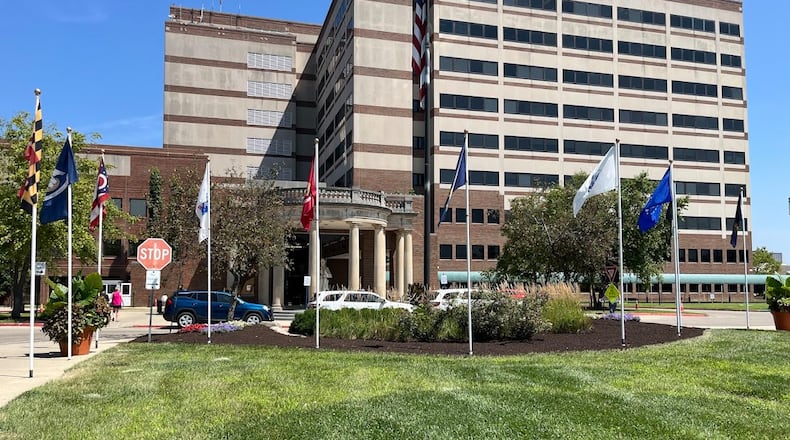Staffing shortages at the VA Dayton Medical Center include clinical medical officers in the fields of urology, surgery, cardiovascular diseases, radiology, medical oncology and other medical areas, the report indicated.
The report also found Dayton shortages in ophthalmology, orthopedic surgery, hematology/oncology, practical nursing, dental hygiene and other areas.
As well, the report identifies non-clinical shortages in fields such as police, food service worker and maintenance mechanic.
Although the problems highlighted in the IG report are not new, the report was issued at a time when the Department of Veterans Affairs under the administration of President Trump, initially, said it was considering a reduction of about 80,000 jobs across the department’s national footprint before later backing away from that goal.
And the numbers in the latest report have been rising.
The report found that 94% of facilities reported “severe” occupational staffing shortages for medical officer occupations, and 79% of facilities reported severe shortages for nursing occupations.
This has been a longstanding problem, the reported noted.
Hospitals in general have struggled with finding workers. The American Hospital Association predicted a shortage of more than 3 million health care workers in the U.S. by 2026.
“This is the 12th OIG (Office of Inspector General) report in a series on occupational staffing shortages and the 8th to identify severe occupational staffing shortages at the facility level,” a report summary said.
The report said the acting VA under secretary for health, Steven Lieberman, reviewed a draft of the report and provided no comments.
A VA spokesman said department-wide vacancy rates for doctors and nurses are 14% and 10%, respectively.
“These are lower than most other health care systems, in line with normal VA historical averages and much lower than the respective 19% and 20% physician and nurse vacancy rates VA saw at times during the Biden administration,” said Peter Kasperowicz, the VA’s press secretary.
VA wait times and backlogs worsened under Biden and improved under Trump, he added. The backlog of veterans waiting for VA benefits increased 24% under Biden and is down more than 37% under the second Trump administration.
“This statutorily required report is not based on actual VA health care facility vacancies and therefore is not a reliable indicator of staffing shortages,” Kasperowicz said. “The report simply lists occupations facilities feel are difficult for which to recruit and retain, so the results are completely subjective, not standardized and unreliable.”
“This report confirms what we’ve warned for months — this administration is driving dedicated VA employees to the private sector at untenable rates,“ said Sen. Richard Blumenthal, D-Conn., ranking member of the Senate Veterans’ Affairs Committee. ”Staffing shortages at the department are getting significantly worse, including critical veterans’ health care positions and essential jobs that keep VA facilities running.“
A spokeswoman for the Dayton VA Medical Center referred to the response from the VA’s national press office.
In July, VA Deputy Secretary Paul Lawrence visited the Dayton VA Medical Center and made a point of saying the VA was in hiring mode.
“We are not cutting benefits,” Lawrence said at the time. “If anything, it’s just the opposite. We’re taking the savings from the actions we’ve previously (taken), hiring more doctors, hiring more nurses, hiring people who adjudicate our benefits claims, so that we can provide better care to our veterans.”
About the Author

